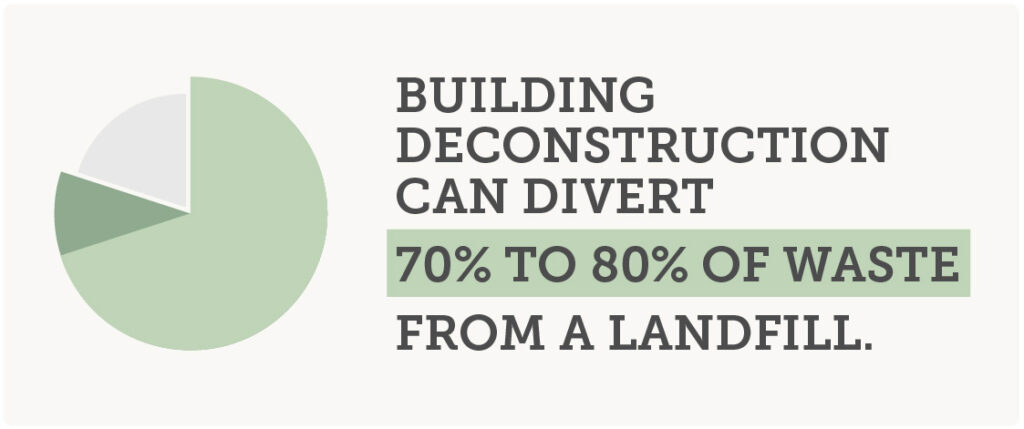The Role of Demolition Companies
As a whole, the demolition industry is focused on environmental stewardship. Demolition contractors work to improve the environment by removing unsafe structures, undertaking remediation to clear away hazardous materials, and rehabilitating sites for new uses.

One obvious way demolition contractors directly support brownfield initiatives is by pursuing environmentally sensitive demolition practices when called in to participate in brownfield redevelopment.
Demolition companies also support brownfield initiatives in a manner that is perhaps less obvious to the layman by becoming specialists in building deconstruction. Deconstruction is dismantling a structure that emphasizes generating as much recyclable material as possible. It can be a less costly, more environmentally-friendly alternative to conventional demolition.
Although deconstruction is more labor intensive, the additional labor costs are partially offset by lower landfill disposal fees. The extra labor involved also has the positive societal benefit of creating additional jobs, often in areas that are economically depressed. Finally, deconstruction reduces the need to consume virgin raw materials by producing reusable and recyclable materials.
The typical deconstruction project can divert 70% to 80% of waste from the landfill. If there is not enough time to do a complete deconstruction job, items such as light fixtures, cabinets, windows, and doors can be readily salvaged. Salvaged items can be reused, donated, or sold for recycling.
The demolition industry was salvaging buildings long before “being green” was popular. In fact, about 2/3 of American steel comes from salvaged steel.
Benefits of Converting Brownfills into Useful Sites

Brownfield redevelopment creates many environmental and economic benefits. Some of the more important include:
- Brownfield sites are often centrally located and connected to existing infrastructures, which reduces the need to build additional infrastructures. Redeveloping brownfields can also reduce or eliminate the need for developing greenfields.
- Redeveloping brownfields reduces impervious surface expansion by as much as 80%. On average, for every 1 acre of redeveloped brownfield, 1.3 and 4.6 acres of new impervious surface will not need to be built.
- Studies have shown that cleaning up brownfields leads to increases in residential property values. Other studies have found that local governments recognized between $29 million and $97 million in additional tax revenue within a year after cleanup.
- Anecdotal surveys indicate crime reduction in areas of revitalized brownfield sites.
Property owners will have difficulty financing, developing, or selling a brownfield at total value until an official Environmental Site Assessment (ESA) has been completed. As a precaution, most lenders, developers, and purchasers routinely ask for an ESA on any commercial or industrial site, even when contamination is not suspected beforehand.
About Oregon’s Brownfield Program
Oregon’s Brownfield Program assists in financing environmental projects associated with redeveloping brownfields. The program includes two different funding sources:
- Brownfield Redevelopment Fund provides direct loans and grants to help property owners conduct environmental actions, assessments, and cleanup on brownfields.
- Brownfield Cleanup Fund provides low-interest loans and grants for cleanup projects on properties found to be contaminated with hazardous substances for which cleanup is necessary before any development or redevelopment can occur.
